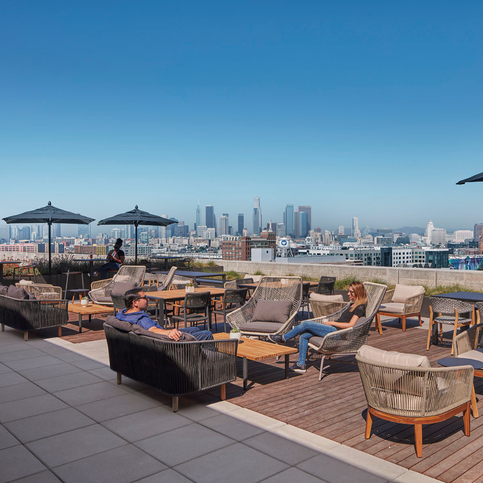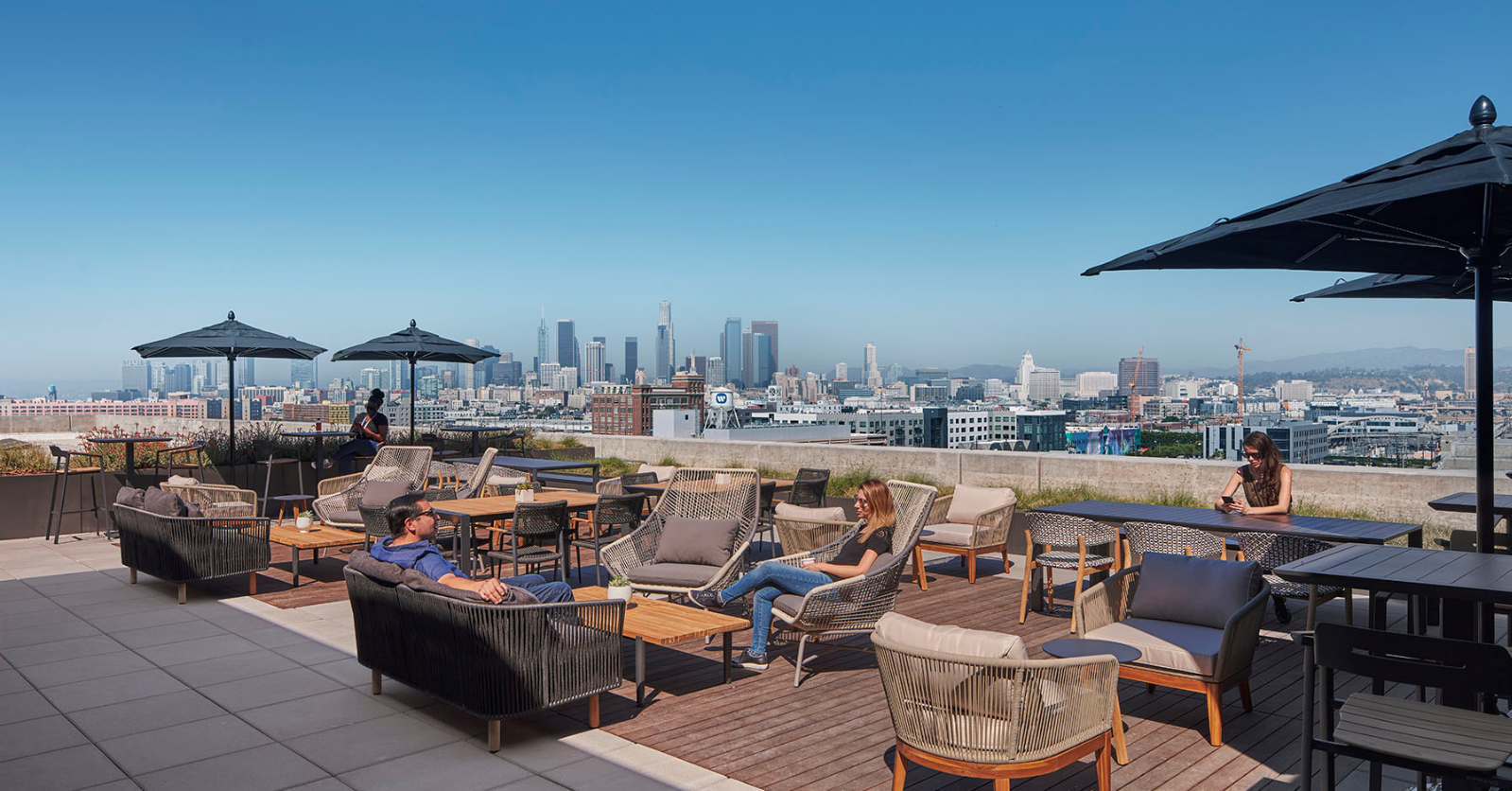As the current perceived status of the office market continues to try to stabilize in a post-pandemic world, we have seen a rise in adaptive reuse and redevelopment. A recent market study shared by AIA shows that renovations have surpassed new construction for the first time in two decades, meaning that building owners and developers are reworking existing spaces to entice both employees and tenants or repurposing assents for alternative uses. With a 30% share of office and build to suit work in our pipeline, we are working with our clients to understand the considerations and opportunities when it comes to improvements, adaptive reuse and redevelopments within the office setting.
At Ware Malcomb we strive to bring our clients’ vision to life. With our diverse portfolio, we can help clients maximize their real estate value. Within the office sector there are many different options, and we look at all the considerations to help our clients make informed decisions that can appeal to the current market and achieve their business objectives.

Creating a Desirable Office
When considering landlord improvements within the office market, we work with our clients to ensure that we understand the new intended use and are designing a desirable space. Adaptive reuse to office or capital improvements investments need to be sustainable financially, and the existing general state of the facility is important to consider before deciding what and how much to modify. It is important to understand what type of investment it will take to modernize the facility and make it usable. Some considerations for adaptive reuse are:
- Quality of the building main elements (façade, floor-to-floor, floorplate, lease span)
- Quality of the space (finishes, daylight, acoustics)
- Location and accessibility
For larger cities like New York, Chicago and Los Angeles, upgrades and continued office use are desirable due to the difficulty of demolishing and redeveloping with ground-up construction within a congested area on assets with highly structured financials. Additionally, within these locations there are submarkets which are highly coveted due to the established urban environment and proximity to other uses. These mixed-use communities cover the new basics of service that tenants are requiring when identifying perspective locations. Commute time, low-rise buildings with direct access, proximity to services, public transit, are all key factors that can elevate a site in today’s market.

Due to the pandemic pause and sending all employees to work remote, we have seen a rapid evolution of the workplace that fast tracked trends emerged in the last 10 years, not dissimilar to what happened to retail. To entice employees to return to office, there is a focus on employee wellness and its relation to productivity and quality work. Employees and employers value spatial quality and access to services more than amenities, which was the previous leading trend. In that context the list of baseline workplace amenities is expanding with design often now including:
- – Restaurants/Grab and Go stations
- – Access to outdoor and nature
- – Gyms and yoga studios
- – Physical therapy rooms
- – Wellness rooms
- – Bars and cafes
- – Golf simulators
- – Libraries
- – Grocery store
- – Online retailer pick up lockers
- – Quiet rooms
In addition to these amenities, there has been an integration into a mixed-use environment. We have seen an emphasis on space for concierge services such as childcare, healthcare, dry cleaning, food delivery or pop-up stations, entertainment and more. This helps entice future tenants and employees with a one-stop shop with accessibility at their fingertips.

Considerations for Reuse
Some cities are implementing initiatives for reuse, Los Angeles County has an Adaptive Reuse Program as well as Chicago and the New York Adaptive Reuse Task Force, allowing for a timely submittal and review process.
With the national office vacancy rate just north of 17% there are many opportunities for adaptive reuse away from office and redevelopment. For the times where office improvements may not result in a reasonable return on the investment, we have seen a rise of conversions or redevelopment to other uses such as:
- – Multifamily
- – Science & Technology
- – Healthcare
- – Self-storage
These conversions are another option when looking at existing office locations that provide greater flexibility, certainty and maximize real estate investments. With our expertise in multifamily, science & technology, healthcare and self-storage, we can perform a comprehensive analysis to determine project scope, risks and cost estimates before deciding what is an optimal fit for you and your space.
We take into consideration the existing property value, which elements and systems are to remain and which to be repaired/replaced in assessing the basis of the conversion design and cost. Based on the numerous projects and studies we conducted we have found the typical target asset is grade is C and below. That could change if various legislative founding initiatives are approved.
When working with existing buildings within established cities, we often analyze historic buildings where there is a balance between functionality, modern use and maintaining elements that provide historic value. When working with historic buildings, it is possible to encounter restrictions associated with the use and the building itself which make it more difficult to provide a new function. To ensure that our cities are alive, it is important to reuse buildings and invest to evolve them, even if it means balancing the historic elements with the intended purpose of the space.

Considerations for Redevelopment
The supply for office space is likely to remain higher than the demand in the next decade. That is resulting in a surplus of product in core and suburban markets, where Class C and D buildings, low coverage developments, and underutilized sites represent an opportunity for redevelopment.
Zoning codes for commercial areas often allow a variety of uses. We are often evaluating and executing demolition of these underperforming office buildings to make room for multifamily, industrial, mixed-use and even EV infrastructure.
Ultimately the strategic infill of these uses in previous office sites increases the general tenancy and value of the area reinforcing demand for the reminder of the offices and creating integrated, vibrant mixed-use communities.
Sustainability
According to the United Nations Environment Programme, the buildings and construction sector accounted for 37% of global energy and process-related CO2 emissions, as designers, architects and builders it is our job to create a more sustainable world for future generations. At Ware Malcomb our in-house sustainability team is comprised of LEED, WELL and Fitwell professionals who are dedicated to just that.
We aim to reduce the amount of embodied carbon within the environments we build to counter the effects of new construction. According to an article by AIA, it can take up to eighty years for a new energy-efficient building to overcome the climate impacts created by construction. Understanding that conversions and adaptive reuse are a way to reduce and eliminate the amount of carbon emissions released each year is key to achieving a more sustainable future.
Reusing brown sites and maximizing the potential of the built environment is always a more sustainable approach than sprawling cities and green field development.
In today’s market, we see a shift in spaces requiring sustainable aspects. When considering a conversion or improvements, our team can identify new uses that make sense for your existing building, in doing so this eliminates the energy consumption needed for demolishing and rebuilding. Our goal is to expand your buildings lifespan, maximize and maintain real estate value and provide a space that supports its intended use. Additionally, our team can include sustainable design concepts throughout each phase of your project. Some sustainable practices we use are:
- – Energy analysis and high efficiency systems
- – Use of local and sustainable materials
- – Alternative energy integrations
- – EV charging options
- – Water management

Future Outlook
Depending on your intended goal with your project there are different options that we can recommend to you. Our diverse portfolio of projects allows our team members to understand all physical and programmatic aspects when thinking about improvements, conversions or redevelopment. We leverage our expertise within different project types to help determine the best fit for each building. In this post-pandemic world, we are continuing to see a rise of return to office and are ready to help you achieve the ideal space, building or site to help attracting talent or tenants.


